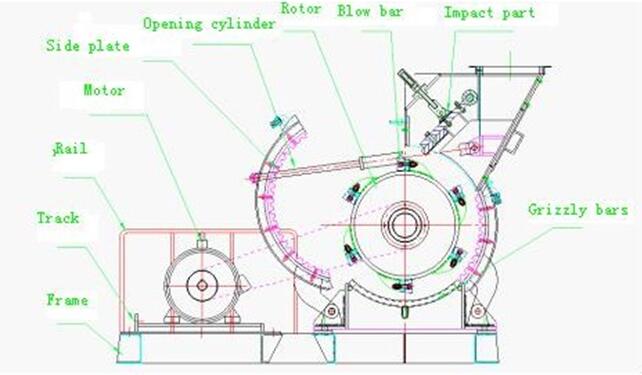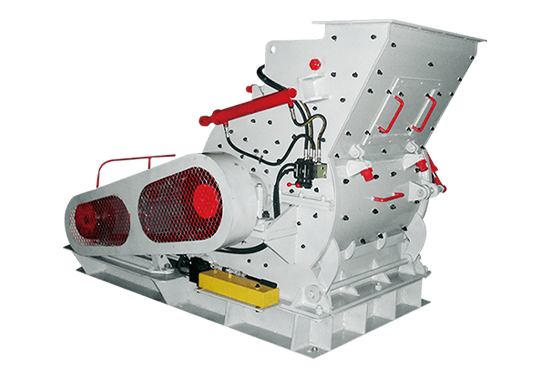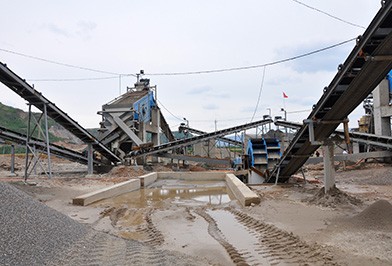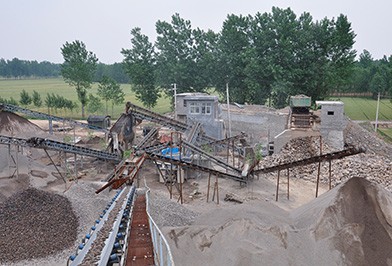Product Details
Application scope
Coarse grinding mill is mainly used in these areas, such as metallurgy, building, chemical, mining industriy, etc. It can grind a variety of non-explosive and non-flammable brittle mining materials, whose Moth's hardness is below 9 grade, such as quartz, feldspar, calcite, marble, porcelain, ironstone, copper ore, coal gangue, phosphate ore, granite, basalt, carborundum, corundum, heat insulating material and so on.
Usage
Generating station to desulfidation: according to client's need, coarse grinding mill could be equipped with vibrating screen and could grind limestone into fine powder below 2mm or 1mm.
Quartz sand (silica sand, casting model powder, etc.): the fine sand from 0mm to 3mm can reach to 70% of the product.
Coarse powder mill: if it is used as coarse powder mill before ball mill, this machine can increase the efficiency of the ball mill by 50%.
Firebrick, baking-free brick, building blocks: the powder produced by this machine is the best mixture material for making baking-free brick and hollow building blocks.
Coarse powder: Equipped by vibrating screen, this machine's volume of production can be increased, 130-140% higher than normal Raymond mill.
4. Main Structure and Working Principle

Coarse Grinding mill mainly consists of frame, rotor, impact plate, grizzly bars and other components. The frame includes upper part and lower part, which are welded by steel plates after cutting. The remaining parts are connected into an integrated one by bolts. Hard-wearing side plates are installed inside the frame. It is easy to replace them when they are worn. On the main shaft are installed several groups of the blow bars with even weight, which are fixed tightly by high-strength bolt.
The host drives the main shaft through the electric motor and V-belt, thereby making the rotor rotate. The bulks of material fed into the crushing chamber will be crushed by the hammers at a high-speed movement. The qualified broken material will be passed the grizzly bars at the lower part and discharged. The unbroken material will be left in the chamber to be crushed repeatedly by the rotor and blow bars until it can reach the requested standard. To avoid clogging, the water content of the material to be crushed is usually not more than 20%.
Installation and Test of the Integrated Machine
1.) The preparation for the coarse grinding’s installation
There should be enough height and space for the installation of the coarse grinding mill, which should be based on the high-standard cement and steel. On-site concrete base is better. There must be 15 days warranty period.
The hoisting tool should be 4 to 5 tons to be able to install and maintain the coarse grinding mill.
After being used for six months, the host machine system, gearing devices, hydro-cylinder and fuel pump of the coarse grinding mill should be cleaned and checked. Clean all the components and supplement enough lube.
2.) The installation of the coarse grinding mill
First make the cement base according to the basic installation graph. Pay attention to the location and size of the foundation bolts. Pay attention to control the height, using gradienter to adjust the upper plane.
The feeder must be installed to ensure the material is sent evenly and continuously.
3.) Test the coarse grinding mill (idling)
The coarse grinding mill should keep idle running for at least 10 minutes. The host machine should operate stably. The temperature of the axle bearing should not be more than 50℃.
After 30 minutes’ running test, the machine should be stopped and the fasteners should be screwed tightly in proper order. The machine could be put into use normally after three successive times of screwing tightly. In the normal production, the machine should be checked one time a week to avoid the loss caused by loose bolts.
Load running should not be less than 8 hours. In the normal use, the machine should not have abnormal noise.
Operation Specification
Make sure all the access doors are enclosed and there is no foreign materials in the hopper such as steel.Special attention should paid to the direction of rotation. The correct direction is counterclockwise.
1. Start motor, and then put materials into hopper after the motor goes smoothly.
2. When turning off the machine ,the hopper should be shut down before the motor.All this should be done after the materials drained away.
3. To make sure the security,please don't fuel during working. Also,any noise or overcharge in a sudden of the grinding should be seen as reason of stopping the machine. The remaining materials must be get out of hopper or it will probably block the regular start.
4. When it comes to wet production,the basic operation is the same to the above due to the absence of dust catcher.
The instruction above is based on the dry production and the execution tend to be simplified during wet production.
Benefits Features
1.) It serves several purposes: this machine can produce the materials of various particle sizes after it constitutes the closed production line with auxiliary equipments.
2.) High efficiency: its efficiency of producing powder and fine sand is higher than ball mill, Raymond mill, vertical mill, etc.
3.) High operating factor of the abrasive materials: even wear of the plates avoids the trouble that rolls must be changed when the middle is sunken in the Raymond mill.
4.) Low fault rate: the special plate structure and seal make it more stable and longer service life than Raymond mill.
| Model | PC4008-75 | PC4012-90 | PC4015-132 |
|
Diameter of the rotor(mm) rotor /mm |
750 | 900 | 1150 |
| Length of the rotor(mm) | 800 | 1200 | 1500 |
| Rotation speed of the rotor(r/min) | 800-1000 | 800-1000 | 550-800 |
| Feeding opening(mm) | 320×930 | 400×1200 | 500×1500 |
| Max. feeding size(mm) | <30 | <40 | <50 |
| Max. output size(mm) | 0-3 | 0-3 | 0-8 |
| Capacity (t/h) | 5-25 | 15-40 | 40-100 |
| Motor Power(Kw) | 75 | 90 | 132 |
| Dimension (L*W*H/mm) | 2310*1665*1610 | 2840*2100*2020 | 3720*2650*2540 |
 Hign-tech Development Zone, Zhengzhou City, Henan, China
Hign-tech Development Zone, Zhengzhou City, Henan, China +86 18737120960
+86 18737120960 kevin@centbro.com
kevin@centbro.com







 +86 18737120960
+86 18737120960
 Hign-tech Development Zone, Zhengzhou City, Henan, China
Hign-tech Development Zone, Zhengzhou City, Henan, China